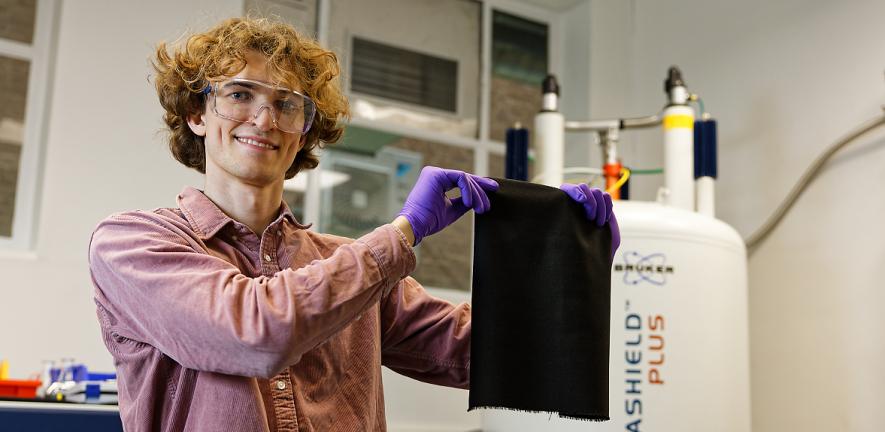
By combining direct measurements of water-saturated porous materials with computer models, the researchers identified that CO₂ concentrates between water and the pore walls, creating a dense, accessible reservoir of gas. This unexpected property of confined water could open new possibilities for next-generation technologies to remove CO₂ from the environment and help combat climate change
Water trapped in nanometre-scale pores of activated carbon, thousands of times thinner than a human hair, can dissolve up to 30 times more CO₂ than ordinary water. Using advanced carbon-13 NMR spectroscopy and computer modelling, researchers found that CO₂ molecules concentrate along pore surfaces, an effect called oversolubility, which is strongest in the tiniest pores. By tailoring pore size, shape, and chemical composition, carbon materials can be engineered to store and process CO₂ more efficiently.
This property has immediate applications for electrochemical CO₂ capture systems, enhancing local CO₂ concentrations near electrodes and enabling more efficient capture and conversion without larger equipment or higher energy use.
%20to%20understand%20how%20carbon%20dioxide%20and%20water%20interact%20with%20the%20porous%20material..png)
After observing the effect in experiments, the team used computational models (above) to understand how carbon dioxide and water interact with the porous material.
The potential impact goes beyond carbon capture:
• Cleaner air and climate action: Capture CO₂ more efficiently from smokestacks or directly from the air;
• Cheaper technologies: Increased efficiency lowers operating costs for CO₂ capture and conversion systems;
• Better batteries: Advanced batteries that rely on gas reactions, such as zinc-air batteries, could see improved performance;
• Greener industry: Gas separation processes, which are typically energy-intensive, could become far more efficient.
This study reveals hidden capabilities within microscopic pores, suggesting a pathway toward smaller, cheaper, and more efficient greenhouse gas mitigation strategies, and pointing to a potentially powerful tool in addressing climate change.
Read the full article here.

